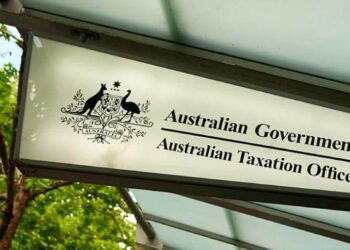Townsends Business & Corporate Lawyers solicitor Elizabeth Wang explained that some SMSF clients see a property they want in their SMSF but don’t have enough time to arrange a bank loan before finalising the purchase, and decide to lend the money themselves and refinance shortly after.
In an online article, Ms Wang gave an example of two SMSF trustees who want to acquire a property through their SMSF via a limited recourse borrowing arrangement using a related party loan and then, straight after settlement, refinance the related party loan with a commercial lender.
Ms Wang said there would be a number of implications to consider with this type of arrangement.
She reminded SMSF professionals and trustees that Practical Compliance Guidelines (PCG 2016/5) sets out the safe harbour terms on which SMSF trustees may structure their related party loans so that a related party loan is consistent with an arm’s length dealing.
“The ATO accepts that a related party loan is consistent with an arm’s length dealing where an LRBA has been used to acquire real property, or to refinance a borrowing used to acquire real property if a mortgage has been registered over the acquired property,” she said.
“For an SMSF to meet the ATO’s Practice Compliance Guidelines, it is recommended that a mortgage is registered over the acquired property soon after settlement has occurred.”
She noted that in this particular example, it may be costly and time-consuming for the trustees to register a mortgage over the acquired property between the mortgagor (holding trustee) and the mortgagee (related party lender), only to then have to discharge that mortgage for the commercial lender to secure and register its interest in the property on title.
“However, the trustees or directors of an SMSF must satisfy the statutory covenants contained in Part 6 of the Superannuation Industry (Supervision) Act 1993 (Cth). Exactly how short a time would be considered acceptable to the ATO for the purposes of avoiding the unnecessary expense of having to register the first mortgage cannot be stated clearly, but certainly the time would be measured in weeks, not months,” she stated.
One option, she said, may be to register a caveat against the title rather than the actual mortgage, as the registration of a caveat is slightly easier and less complicated.
There is still some uncertainty, however, whether a caveat would provide sufficient security in the circumstances — including the relatively short time until completion of the refinance — to comply with the trustees’/directors’ duties, she cautioned.
The trustees also need to ensure they are complying with Part 6 of the SIS Act that provides statutory covenants which trustees/directors of an SMSF are required to follow when performing their duties.
“A contravention of a statutory covenant may result in civil or criminal consequences,” she warned.
These covenants include trustees exercising their power in the best interests of beneficiaries and extends to trustees securing trust assets of the SMSF.
“In the context of a limited recourse borrowing arrangement, the trustees/directors of an SMSF must ensure that if a default on the loan occurs that the lender will only have access to the individual property which secures the loan and not to any other property also held on trust for the SMSF by the holding trustee,” she said.
“Failing to register the mortgage securing the related party loan may constitute a breach of this statutory covenant by the fund trustee. Again, the registration of a caveat may be the answer to cover the short period until the refinance.”
While the original related party loan is only short-term step, documentation is also critical, she stressed.
“It is vital that resolutions of the SMSF trustee, the holding trustee and the related party lender be prepared and kept on the fund’s register as evidentiary documentation should a third party query a mortgage not being registered between the holding trustee as mortgagor and the related party as mortgagee,” she said.
“These resolutions should be prepared to formally record the SMSF trustee directing the holding trustee to enter into a loan refinance and for all parties to acknowledge that the existing loan is to be refinanced with the commercial lender.”


